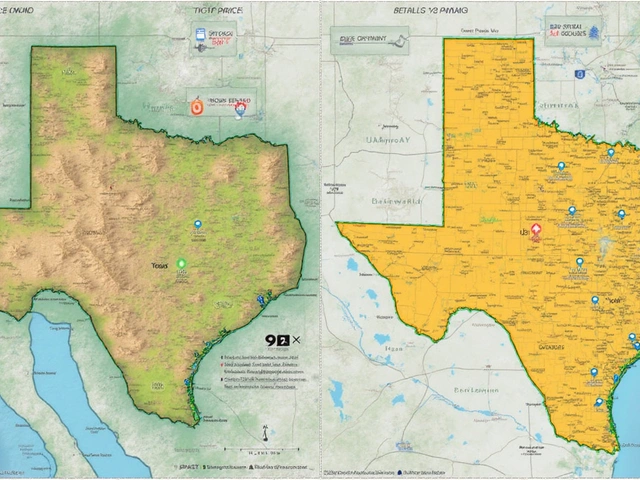Coughing up thousands, sometimes millions, up front for a commercial property can make your head spin. Most people don’t realize just how much cash you’ll actually need to get a lender to nod yes, even if you think you have a killer business plan. The internet is full of myths—some folks talk about 10%, others bet on 30%. No wonder there’s confusion. Commercial loans do not play by the same rules as home mortgages. We're talking big money, bigger risks, and very different expectations from lenders. Hoping to buy a warehouse, an office building, or a small strip mall? Knowing the real numbers—not guesses—can make or break the deal.
The Truth About Down Payments: Real Numbers, Not Just Hype
When it comes to residential mortgages, you hear about 3%, 5%, or maybe 20% down. Commercial real estate is a whole different universe. The magic number? Most banks require 20% to 30% down for a standard commercial loan. For some hot properties or borrowers with deep-pocketed track records, you might squeak by with 15%. But those deals are rare, usually reserved for repeat borrowers or multimillion-dollar projects in prime locations. For the rest of us, 25% is the golden rule—you’ll see that number pop up from local banks in Chicago all the way to the big lenders in New York. According to a 2024 report by the National Association of Realtors, commercial loan down payment averages have hovered at roughly 26% for three years running. It’s not just about the number, though—it’s about skin in the game. Banks want to know you’re not going to ghost the property when things get tight.
Here’s something you probably haven’t heard: certain loan types have their own quirks. SBA (Small Business Administration)-backed 504 and 7(a) loans, for example, let you sneak in with just 10% down, but those loans come with fine print. You’ll likely need to be an owner-occupant (using at least 51% of the space for your business), and you’ll pay extra fees. CMBS (Commercial Mortgage-Backed Securities) loans? Down payments tend to settle at 25-30%, but lenders get even more picky about who qualifies. If you wander into investment property territory—think apartment buildings or retail centers—expect stricter rules because lenders know investment properties come with more risk.
Lenders also look hard at the property type and your business’ cash flow. Want to buy a self-storage facility or a medical office? Banks love those—they’re stable, growing sectors with solid repayment records. They might even loosen the down payment by a few percentage points. Trying to finance a struggling restaurant or a run-down strip center? Brace for a bigger ask. It’s not only about your personal or business credit; it’s about what you’re buying and how likely it is to keep paying the bills. If you’re buying in a hot urban market with rising rents and low vacancy, your loan officer may cut you some slack. Rural deals, or assets with spotty history? The bar goes up fast.
Banks also size up your experience. First-time investor? They might look for higher down. Seasoned operator with a proven portfolio? You might negotiate for less, especially if you can back up your track record with clear, easy-to-read financials. Some lenders layer in "reserves" or "holdbacks"—extra cash set aside to cover repairs, tenant vacancies, or other curveballs—before final approval. Don’t forget about closing costs, either. Escrow fees, title insurance, appraisal charges, and lender fees can chip away 2-5% from your cash pile. If you want the bank’s best rate, show that you can cover both the down payment and these extras without sweating.
| Loan Type | Typical Down Payment | Best Use Case |
|---|---|---|
| Bank/Traditional | 20-30% | Office, Retail, Warehouse |
| SBA 504/7(a) | 10-15% | Owner-User (occupy property) |
| CMBS | 25-30% | Investment Property |
| Private Lender/Bridge Loan | 15-30%+ | Short-Term/Quick Deals |
Tenants also shape your deal. If your future building is packed with blue-chip national brands—think Starbucks or big pharmacies—banks see stability and risk goes down. Vacant space or one-off "mom and pop" renters can make your down payment climb. Lender rules can also change by region. California banks, for instance, tend to want more down due to price swings, while the Midwest can be a little more relaxed.
The bottom line: if you’re just getting started, pitch your budget on 25% down. For a $1 million building, that’s $250,000, not including closing costs. Anything lower means you’ll need to shop around, have top-notch credit, and offer a business plan that makes lenders salivate. Talking to multiple banks—not just one—can mean the difference between possible and pipedream. Most folks don’t realize that local and regional banks can be more generous than big national chains. They may know the neighborhood better, have more flexible rules, or be open to first-time deals. Always ask about their average down payment for commercial real estate loans—the best way to see how you stack up.
"A lender’s number one priority is risk. The more risk you take off their table, the less cash they’ll ask you to put up," says Mark Ellison, Senior Analyst at Crexi (2024 CRE Finance Survey).

What the Lender Looks For: Beyond Your Down Payment
Down payment is just the start. Lenders care about your cash, but they care more about the whole picture: the deal, your experience, your finances, the property’s tenants, and the local market. They don’t just hand out money based on a percentage—they run the numbers through every lens they have. Want to nail your first (or next) commercial deal? Here’s what they’ll pick apart besides your down payment amount.
Your credit score matters, but not the same way it does for a home. For commercial loans, banks often want at least a 660 credit score, but 700+ gives you more options and better rates. Got bankruptcies or recent delinquencies? Those can make lenders nervous, jacking up your required down payment or cutting you out altogether. If you’re applying for an SBA-backed loan, expect an even closer look at your borrowing history—the government keeps a tight leash on public funds. But even a great credit score can't save a deal if everything else looks risky to a lender.
The bank’s next stop: debt service coverage ratio (DSCR). Put simply, how much money does the building itself throw off every month, versus how much your future loan payment will be? Lenders love a DSCR of at least 1.25 (meaning net operating income is 25% higher than annual loan payments). If your DSCR is tight, expect the bank to bump up the down payment to make the numbers safer for them. This is especially huge if you’re eyeing properties that need fixing up, or ones with short/expiring leases.
Next up: property quality and location. A gleaming new medical office in a bustling metro area with a waiting list of tenants? Banks drool for those. A tired retail center in a town where half the stores are closing? You’ll face steeper requirements, and possibly a higher interest rate too. Lenders send out their own appraisers—not yours—to check that the building’s really worth what you’re paying. If the appraisal comes in low, you’ll have to cover the gap. Don’t forget zoning issues, environmental hurdles (like old gas stations needing cleanup), or properties that “don’t pencil out”—those all scare lenders and make the bar higher.
Your liquid assets matter too. Lenders want borrowers who have extra reserves on hand—sometimes up to six months of payments—proving you won’t default at the first sign of trouble. This is a smart move on your part too. Surprises happen: a boiler blows, a tenant disappears, the market changes. The best way to win over a skeptical lender? Show bank statements with a strong cushion after your down payment disappears.
Experience isn’t just a buzzword in these deals, it’s almost currency. If you’ve run properties before, managed vacancy issues, kept up with repairs, and weathered economic blips, you’re far more attractive to lenders. Some banks will even waive certain fees or lower your down payment if you can prove you’ve done this before and succeeded. If you’re new, partner up with someone seasoned for your first deal. It’s common to see first-timers bring in "silent" investors who have the background banks love. Some lenders even allow "sweat equity"—your contribution in managing or improving the property—to count towards a portion of the down payment, but don’t rely on it for the bulk.
Documentation is king. The smoother and cleaner your package, the faster (and more favorably) banks will treat you. You’ll need: three years of tax returns, personal and business financial statements, a business plan if you’re running a venture out of the property, rent rolls (for investment spaces), and detailed lease copies. Missing documents give lenders an excuse to drag their feet or hedge their bets with a bigger down payment ask.
Here are a few tips for impressing lenders and keeping your down payment at the lower end of that 20-30% spread:
- Keep your credit squeaky clean in the year leading up to your application—pay off small debts and don’t take out new loans.
- Show reserves equal to at least 6-12 months of mortgage payments.
- Prepare updated, professional financial statements for yourself and your business.
- If buying an investment property, line up tenant lease commitments in advance—especially from reliable, long-term brands.
- Ask bankers up front what property types and locations they’re hungry for. Some banks have quotas for certain sectors and will be more flexible if you fit their goals.
Don’t try to fudge the numbers. Most banks talk to each other and can see through last-minute deposit shuffles or oddly-timed credit pay-downs. Instead, walk in with honesty and confidence. If you’re unsure how much down payment you’ll need, ask for examples from similar deals. Smart borrowers call three, even five, different banks and play the offers against each other to find the best terms.

How to Boost Your Odds: Navigating the 2025 Market
Here in 2025, interest rates have stayed stubbornly high after the 2023-2024 bump, and banks are choosier than ever. But the good news? There’s more flexibility if you know where—and how—to look. While hard money lenders are still out there willing to consider lower down payments for fast deals, those come with double-digit rates and lots of risk. Smart buyers stick to traditional or SBA-backed banks unless speed is worth the extra cost.
Here’s a trick most newbies miss: regional and community banks are often hungrier for commercial deals than national giants. They know the local economy, are more likely to work with new investors, and in tight credit markets (like today) can be dramatically more flexible on down payment size, timeline, and fees. Suppose you’re looking at a $500,000 mixed-use building in a mid-sized city. A big chain might ask for the classic 25-30% down, but the local credit union could get creative with part-cash, part-collateral, or even seller-financed portions.
SBA 504 and 7(a) loans are two of your best friends if you want a lower down payment and don’t mind paperwork or extra fees. These loans, partially guaranteed by the government, let you get away with 10-15% down in many cases, especially if your business is healthy and the location is strong. Don’t expect instant approval, though—it takes patience and a clean paper trail. If you’re in a rush or have a not-so-perfect building in mind, look for a lender on the local level who’s got lending targets to hit.
One invisible barrier? Appraisals. In a rising market, appraisals often lag behind actual prices, making buyers have to cough up more to bridge the gap. Always build a buffer into your budget (at least 5-10% more than you think you’ll need) for these surprises. If you get a lowball appraisal, some banks let you challenge it or use extra collateral, but most will simply ask for more cash up front. Savvy buyers ask about the appraisal process before locking in anything and even check with their broker for comparable sales that can be shared with the appraiser.
Sometimes, you can negotiate with the seller to bridge the down payment gap. Seller financing—where the seller acts as the "bank" for a portion of the price—used to be super rare for commercial deals, but as bank requirements have tightened, more sellers are open to creative financing. In these cases, you might only need to bring 15-20% to the table, with the seller carrying the rest for a few years. Make sure your lawyer reviews every part of this type of deal—hidden traps are common.
Watch for grants and economic development loans in your area. City governments and local business bureaus sometimes offer gap-financing, down payment assistance, or property improvement grants for buyers who bring jobs or services to underserved neighborhoods. In 2024, more than $2.1 billion in public-private loan support was handed out to small businesses for property purchases. It takes extra effort (and paperwork), but the savings can push your down payment lower than any bank will allow alone.
Here’s a quick list of must-do steps if you want the best down payment deal:
- Get pre-approved from at least two different lenders, even before you’ve found a property. This gives you a credit baseline—and leverage.
- Compare loan types and see if you qualify for SBA 504 or 7(a) loans—don’t assume you’re ineligible.
- Always ask about "loan-to-value" limits: these percentages set the maximum amount you can borrow compared to property value.
- Have all documents ready: personal and business tax returns, financials, rent rolls, and legal documentation in a clean file.
- Be ready to cover above-average closing costs, especially for investment properties and deals over $1 million.
- Keep your credit and business spending squeaky clean—underwriters watch your finances closely up to the funding date.
- Treat lenders as partners: honesty and clear communication help you negotiate for better terms.
If you’ve budgeted for 25% down, lined up your documents, and know what lenders want, you’re well on your way. Plenty of commercial deals still close with less—especially for high-demand properties or with creative financing—but most buyers do best aiming for that 25% mark. The days of no-money-down deals are gone, but with a smart game plan, you’ll bring the right check to the table and get your deal done without the lending headaches.





